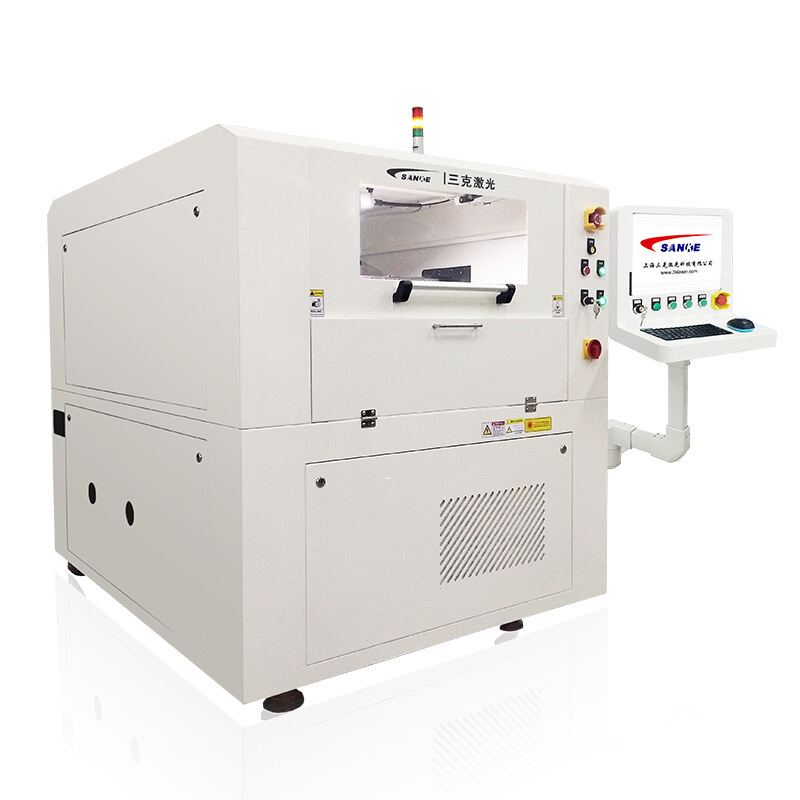The Revolutionary Impact of Industrial Laser Cleaning Solutions
The advent of laser cleaning machine technology has transformed industrial cleaning processes across multiple sectors. This innovative approach uses high-precision laser beams to remove contaminants, rust, paint, and other unwanted materials from surfaces without causing damage to the underlying material. As industries seek more efficient, environmentally friendly, and cost-effective cleaning solutions, laser cleaning has emerged as a game-changing technology that delivers superior results while reducing operational costs.
Modern laser cleaning machine systems represent a significant leap forward from traditional cleaning methods such as sandblasting, chemical cleaning, or manual scrubbing. They offer unprecedented precision, automation capabilities, and minimal environmental impact, making them increasingly indispensable across various industrial applications.
Manufacturing and Automotive Applications
Production Line Integration
The manufacturing sector has embraced laser cleaning machine technology with remarkable enthusiasm. Production lines now incorporate these systems for pre-treatment processes, surface preparation before coating or painting, and quality control measures. The precision of laser cleaning ensures consistent results across large production volumes, significantly reducing rejection rates and improving overall product quality.
Automotive manufacturers utilize laser cleaning machines for various applications, from removing rust on body panels to preparing surfaces for welding. The technology's ability to clean without leaving residue or causing material damage has made it particularly valuable in high-precision automotive assembly processes.
Mold and Tool Maintenance
Industrial molds and tools require regular cleaning to maintain optimal performance and extend their lifespan. Laser cleaning machines excel in removing built-up residues, release agents, and oxidation from expensive mold surfaces without altering their critical dimensions. This preservation of tooling accuracy translates into significant cost savings and improved product quality.
The automotive industry has reported substantial reductions in maintenance downtime since adopting laser cleaning technology. What once took hours using traditional cleaning methods can now be accomplished in minutes, with superior results and without the need for harmful chemicals or abrasive materials.
Electronics and Semiconductor Industry
Circuit Board Preparation
In the electronics industry, laser cleaning machines have become essential tools for preparing and maintaining circuit boards and electronic components. The technology's precision allows for the selective removal of contaminants and coatings without damaging sensitive electronic elements. This capability is particularly crucial in the production of high-performance electronic devices where cleanliness standards are exceptionally stringent.
Manufacturers of semiconductor components rely on laser cleaning systems to ensure pristine surface conditions before critical processes such as wire bonding and die attachment. The non-contact nature of laser cleaning eliminates the risk of static discharge and physical damage that can occur with traditional cleaning methods.
Component Refurbishment
Electronic component refurbishment has seen remarkable improvements through the adoption of laser cleaning technology. Used circuit boards and electronic assemblies can be efficiently cleaned and prepared for reuse, supporting sustainability initiatives while maintaining high-quality standards. This application has become increasingly important as industries focus on reducing electronic waste and embracing circular economy principles.
Aerospace and Aviation Maintenance
Aircraft Component Restoration
The aerospace industry demands the highest levels of precision and reliability in maintenance procedures. Laser cleaning machines have proven invaluable in maintaining aircraft components, removing coatings and contamination from critical parts without risking structural integrity. From engine components to landing gear assemblies, the technology provides a safe and effective method for cleaning and surface preparation.
Airlines and maintenance facilities have reported significant time savings and improved safety compliance since implementing laser cleaning systems. The technology's ability to remove multiple layers of paint and coating materials without chemical strippers has revolutionized aircraft maintenance procedures.
Surface Treatment for Aerospace Materials
Advanced aerospace materials require specialized cleaning approaches that preserve their unique properties. Laser cleaning machines offer the perfect solution for treating composite materials, titanium alloys, and other high-performance materials used in aircraft construction. The precision control over cleaning parameters ensures that material properties remain uncompromised while achieving the desired level of cleanliness.
Heritage Conservation and Restoration
Artifact Preservation
The cultural heritage sector has discovered the remarkable benefits of laser cleaning machines for preserving historical artifacts and artwork. The technology's precise control allows conservators to remove centuries of accumulated dirt and degradation without risking damage to delicate underlying surfaces. This capability has opened new possibilities in art restoration and architectural conservation.
Museums and conservation institutions worldwide have adopted laser cleaning technology for their most sensitive restoration projects. The non-invasive nature of the process makes it ideal for cleaning valuable artifacts where traditional methods might be too risky or ineffective.
Architectural Restoration
Historical buildings and monuments benefit greatly from laser cleaning technology. The machines can effectively remove environmental pollutants, biological growth, and other contaminants from stone, metal, and wood surfaces while preserving historical patinas and surface details. This application has proven particularly valuable in urban environments where air pollution poses a constant threat to architectural heritage.
Frequently Asked Questions
How does a laser cleaning machine compare to traditional cleaning methods?
Laser cleaning machines offer superior precision, environmental friendliness, and cost-effectiveness compared to traditional methods. They eliminate the need for chemicals or abrasive materials, reduce waste, and provide consistent results with minimal operator intervention. While the initial investment may be higher, the long-term benefits in terms of operating costs and cleaning quality make them increasingly attractive to various industries.
What maintenance is required for laser cleaning equipment?
Laser cleaning machines require relatively minimal maintenance compared to conventional cleaning systems. Regular inspection of optical components, cleaning of filters, and occasional calibration are the primary maintenance tasks. Most systems are designed for industrial use and can operate continuously with proper care and periodic professional servicing.
Can laser cleaning be automated for production lines?
Yes, laser cleaning machines can be fully integrated into automated production lines. Modern systems often feature robotic interfaces, programmable cleaning patterns, and quality control feedback mechanisms. This automation capability makes them ideal for high-volume manufacturing environments where consistency and efficiency are crucial.
 EN
EN
 AR
AR
 FR
FR
 DE
DE
 JA
JA
 KO
KO
 RU
RU
 ES
ES


